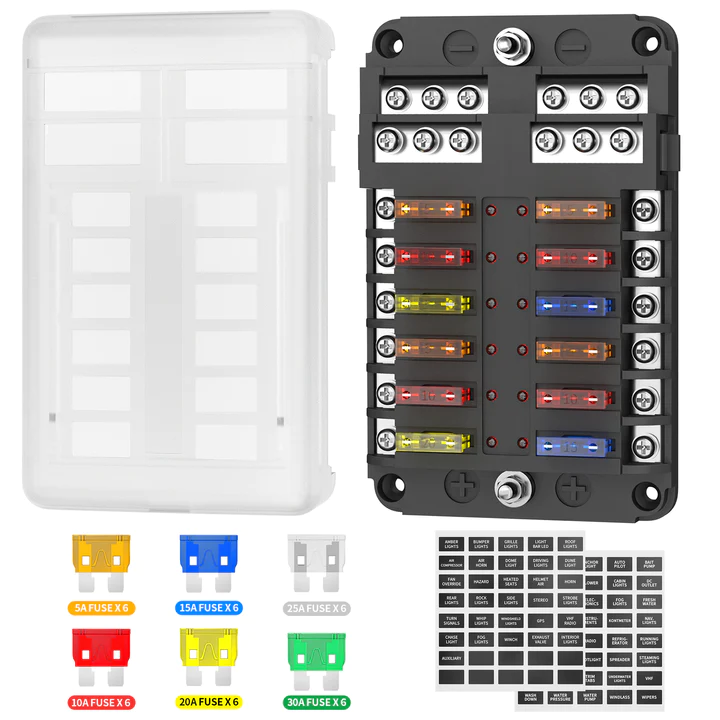In the intricate web of electrical systems, fuse blocks play a crucial role in safeguarding equipment and preventing electrical fires. Understanding the fundamentals of fuse blocks is essential for both homeowners and professionals to ensure the reliable and safe operation of electrical circuits.
What is a Fuse Block?
A fuse block is a protective device that houses multiple fuses in one centralized location. Its primary function is to interrupt the electrical circuit when a fault, such as an overload or short circuit, occurs. By doing so, a fuse block prevents excessive current from flowing through the circuit, protecting connected devices and wiring from damage.
Components of a Fuse Block
A typical fuse block comprises several key components. The fuses themselves are at the core, serving as sacrificial devices that melt or blow when exposed to excessive current. The fuse block also includes terminals for electrical connections, allowing multiple circuits to be protected simultaneously. Additionally, there may be indicator lights to signal a blown fuse, aiding in quick identification and replacement.
Types of Fuses in Fuse Blocks
Fuse blocks accommodate different types of fuses, each designed for specific applications. Common types include blade fuses, cartridge fuses, and plug fuses. The choice of fuse depends on factors such as current rating, voltage, and the intended use of the electrical circuit.
The Role of Fuse Blocks in Electrical Safety
Fuse blocks play a pivotal role in enhancing electrical safety. By interrupting the circuit during abnormal conditions, they prevent overheating and potential fire hazards. This is especially critical in residential and commercial settings where numerous electrical devices are in use.
Choosing the Right Fuse Block
Selecting the appropriate fuse block is essential for optimal performance. Factors such as the maximum current rating, voltage compatibility, and the type of fuses supported should be considered. Additionally, the physical size and mounting options of the fuse block must align with the available space and installation requirements.
Installation and Maintenance Tips
Proper installation of a fuse block is crucial to its effectiveness. Ensuring secure electrical connections, following manufacturer guidelines, and adhering to local electrical codes are essential steps. Regular maintenance involves checking for blown fuses, replacing them promptly, and inspecting the overall condition of the fuse block.
Applications of Fuse Blocks
Fuse blocks find applications in various sectors, including automotive, marine, residential, and industrial settings. They protect a wide array of electrical circuits, from lighting and appliances to machinery and power distribution systems.
Conclusion
In conclusion, a clear understanding of fuse blocks is paramount for anyone dealing with electrical systems. These devices serve as guardians of our electrical infrastructure, preventing damage and ensuring the safety of both people and property.
Whether in a residence or an industrial facility, the role of fuse blocks in maintaining the integrity of electrical circuits is indispensable. By grasping the basics outlined in this guide, individuals can navigate the world of fuse blocks with confidence, contributing to a safer and more reliable electrical environment.
